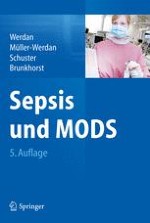Zusammenfassung
Bei chronisch kritisch kranken Patienten besitzt die Reduktion der Abhängigkeit von lebenserhaltenden Technologien, insb. Beatmung, wesentliche Bedeutung. Darüber hinaus lässt sich sowohl für die stationäre wie für die ambulante Versorgung chronisch kritisch Kranker feststellen, dass Folgeschäden einer akuten kritischen Krankheit nur behandelt werden, wenn sie angemessen diagnostiziert und erkannt werden. Wenn z. B. neurologische Folgeerkrankungen nicht hinreichend diagnostiziert werden, lässt sich auch kein stationärer oder ambulanter Behandlungs- bzw. Rehabilitationsbedarf begründen. Bei mangelnder Sensibilität für neurokognitive Folgen der kritischen Erkrankung und für das posttraumatische Belastungssyndrom beim Patienten, aber auch bei Angehörigen wird keine angemessene Behandlung eingeleitet. Entsprechend den aktuellen Leitlinien ist es deshalb erforderlich, aktiv die Folgen akuter kritischer Krankheit zu suchen, um so eventuelle Funktionsdefizite zu erkennen und zu minimieren.











